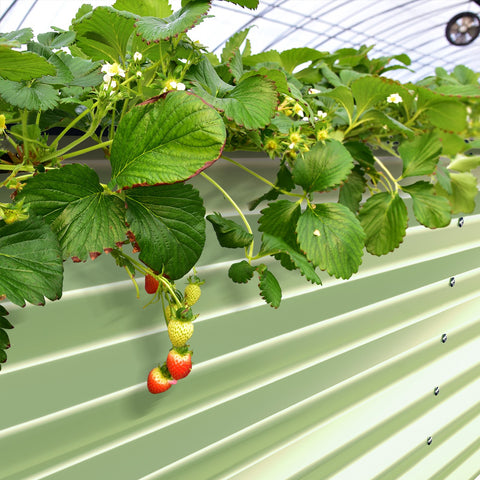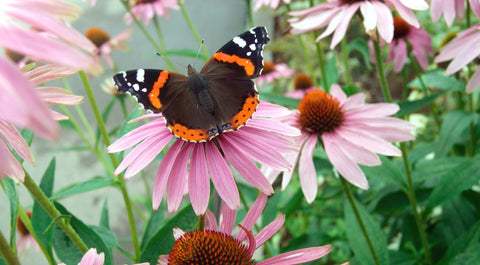This may be hard to believe if you live where winter is still entrenched - but now is actually a good time to start planning your spring/summer garden. This is especially true if you're dealing with your first vegetable garden, but even experienced gardeners will benefit from planning the layout of the garden and deciding ahead of time which crops to plant. The following content also has some reference value for raised garden beds.
Growing vegetables for the first time can be a daunting task, to say the least, so we asked the experts for their expert advice. That's what they said.

01 Be patient
Remember one important thing before you start: a great vegetable garden takes time. Building a thriving, ecologically balanced garden takes time - it's okay to make mistakes.
02 Start small
Even if you're lucky enough to have a large plot of land to farm, it's best to keep things manageable - at least at first.
Start with a small space so it doesn't feel too crowded. This will give you a good insight into the time invested in growing your garden.
A great way to start any garden layout is to plant things you like to eat. From there, add some beneficial pollinators and native plants to create a thriving ecological habitat.
03 Mark your plot
After you've determined the relative size of your garden, an important first step is this: mark your territory. Make sure that no matter where you plan to plant, your garden is either filled with sunlight or the seeds you've picked don't mind a little shade.
Mark out a sunny patch of land in your garden, or choose a wooden planter for your new hobby. Vegetables need sunlight, so try to stay out of the shade. Regardless of the size of your plot, it's also important to consider vertical growing space. Don't forget to use trellises to grow and maximize the growing area you may not have on the ground.
If part of your garden is neglected by partial shade, choose seeds that can grow under these conditions. Herbs and kale, for example, can tolerate shade better than other vegetables.

04 Planned irrigation
In addition to plenty of sunlight, vegetables also need water, and lots of it. Be sure to pick a viable spot in the yard. Davis recommends making sure your space is reachable with a hose. Seeds and seedlings can thrive just by drinking water from a kettle, but as they grow, they will need more water.
05 Remove rocks and weeds from the soil
Once you've chosen the perfect site, it's time to prepare the soil. If you are planting directly in the field, make sure your soil has been cleared of all stones and weeds. Also make sure your soil is of the highest quality.
The key to a truly successful crop is good quality soil, and adding a rich compost will help no matter what your soil conditions are before planting. Whether it's compost you've piled yourself or store-bought compost, a certain amount of compost in the soil will really give your seeds a boost.
06 Start with the simplest vegetables
It may depend on where you live, but Davis says a good place to start for your garden layout is with easy to grow plants. Starting in March, start planting vegetables that are not too difficult to grow, such as salad leaves, Onions, beetroot, peas and potatoes. Tomatoes, cucumbers, peppers, squash and green beans are easy to grow.
If you haven't gotten all the seeds you want, think again. You may already have the seeds you need to grow vegetables, and you can dry the vegetables you buy to eat yourself.
07 Plan a proper vegetable plot
Once your field or planter is ready, it's not as simple as throwing seeds into the soil, watering, and waiting, you may need to be very conscious about where you plant each crop.
If you want to ensure a happy, peaceful vegetable patch, there are several seeds that should not be sewn together. Plants release different compounds that can negatively affect neighbors if the garden is not properly planned. Beans and Onions are incompatible because they produce biochemical substances that hinder growth. However, carrots grow well next to beans, but not so well next to their root vegetable parsnips. Certain plants also attract certain non-beneficial insects, which may attack other vegetables if planted together.
Overcrowding can cause severe headaches later in the growing season. To avoid overcrowding, the maturity height and size of the plant are the most important considerations. When plants compete for soil nutrients, air currents, and sunlight, you get all kinds of pests and diseases. Remember to combine high and low growing plants each season so that they can work together.
08 Pay attention to the individual needs of each plant
One of the best ways to ensure a successful garden is to treat each plant individually. The best way to do this is to check the instructions on the back of the seed package. There, you'll find the number of days to mature, the date of transplantation, and the right temperature for growth.

Once you've planned what you want to plant next season, check the date on the package and check the frost date to make sure you're consistent with the right weather (i.e. soil temperature).
09 Add natural insect eaters to your layout
Adding easy-to-care space chrysanthemum, chamomile, marigold, chrysanthemum, borage, nasturtium, and marigold to your bed will attract ladybugs, lacewings, hoverflies, and other insects to help control aphids, thrips, and other destructive pests.
10 Maximize biodiversity
Maximizing biodiversity is a horticultural skill that maximizes biodiversity by growing anything, anywhere.
11 Embrace the Journey
No matter where your garden journey leads, it's important to embrace the process and learn as you go.









